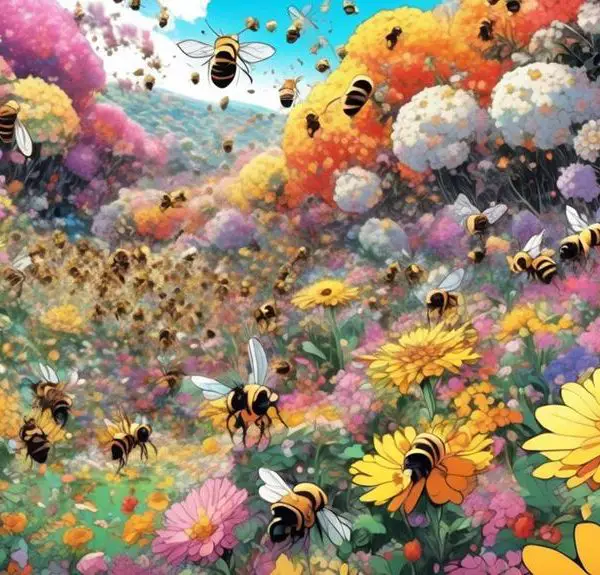Marvel at the lesser-known edible uses of beeswax and unravel its potential impacts on your health.
Is Beeswax Edible?
You've seen it in the ingredients list of your favorite lip balm and perhaps even in your favorite artisanal cheese, but have you ever stopped to wonder if beeswax is actually edible?
As an organic compound secreted by honey bees, beeswax is well-known for its use in cosmetic products and candles, but its place in our food chain appears to be a lesser-known fact. While it's not something you'd want to eat by the spoonful, you might be surprised at how often you encounter beeswax in your diet.
Now, the question beckons: is it safe to consume and what are its potential impacts on your health? Let's unravel this enigma together.
Understanding Beeswax Composition
Before you can dive into whether beeswax is edible, it's crucial to break down its composition first. Beeswax is a natural substance that honeybees produce. It's used primarily to construct the honeycombs where they store honey and nurture their young.
Understanding beeswax begins with examining its components. It's mainly comprised of esters, fatty acids, and long-chain alcohols. Specifically, it contains over 284 different compounds! However, the exact composition can vary due to factors like the bee species, age, diet, and the environment.
You might also find it interesting to know that beeswax has a relatively low melting point, between 62 to 64 degrees Celsius. That's why it's so easy to mold and shape, making it a favourite for various applications, from candle making to cosmetics.
Historical Uses of Beeswax
You'd be amazed to learn how long beeswax has been used in human history, dating back to ancient civilizations. The Egyptians, for instance, incorporated it into their mummification process and used it to create lost-wax castings. They also carved beeswax into statues of their gods.
But it wasn't just the Egyptians who recognized the value of beeswax. The Romans used it to make waterproof clothing and to seal their scripts and letters. In the Middle Ages, beeswax was a common ingredient in candle making, providing a cleaner and longer-lasting light source than other available materials.
Beeswax has also left its mark in the art world. Encaustic painting, a technique that involves using heated beeswax mixed with colored pigments, was popular in ancient Greek and Roman times and experienced a resurgence in the 20th century.
Even in medicine, beeswax has had its place. It was used as a binding agent in the making of pills and ointments, and some cultures even believed it had healing properties.
Beeswax in Food Industry
When it comes to the food industry, beeswax plays a surprisingly significant role. As a natural, non-toxic product, it's safe for consumption and offers many versatile uses.
You'd find beeswax in several food products, often as a coating to preserve freshness and extend shelf life. Ever wondered why certain candies are shiny? That's beeswax. It's also used on fruits and vegetables for the same glossy effect.
What's more, beeswax is a common ingredient in baking. It can replace oil or butter, providing a unique texture to pastries. It also works wonders in the world of beverages, particularly in winemaking. It's used to seal bottles, preventing air from spoiling the wine.
And let's not forget about the health sector. Beeswax is a staple in dietary supplements, thanks to its ability to bind ingredients and ease digestion.
Health Implications of Eating Beeswax
Despite its wide use in the food industry, you might be wondering about the potential health implications of eating beeswax. Rest assured, consuming beeswax is generally safe for most people. However, it's important to understand that your body can't fully digest it. It passes through your system mostly unchanged.
The minor health risks associated with beeswax consumption are typically allergic reactions. If you're allergic to honey or pollen, it's possible you could have a similar reaction to beeswax. Symptoms could include hives, difficulty breathing, or swelling of the face, lips, tongue, or throat.
On the bright side, beeswax has several health benefits. It's a good source of dietary fiber and can help improve digestion. It also contains vitamin A, which is essential for good skin health. Some studies even suggest that beeswax could lower cholesterol levels.
Safe Consumption Guidelines for Beeswax
Keeping in mind the health implications of beeswax, it's crucial to know how to safely consume it. You don't want to dive headfirst into a beeswax eating spree without some guidelines, do you?
Firstly, always purchase food-grade beeswax. This is beeswax that's been processed and purified to be safe for consumption. It's typically available in health food stores or online.
Secondly, moderation is key. While beeswax isn't inherently harmful, eating large amounts can lead to digestive issues. It's best to consume it in small quantities. We're talking about a teaspoon or less per day.
Thirdly, combine it with other foods. Beeswax is often used in the preparation of certain foods and beverages to enhance texture and flavor. Using beeswax in this manner can make it easier for your body to process.
Lastly, listen to your body. If you experience any adverse reactions, like stomach discomfort, after consuming beeswax, it's best to hold off on further consumption.
Conclusion
So, can you eat beeswax? Absolutely. Historically, it's been used in food and medicine for centuries. Nowadays, it's often found in food products as a glazing agent.
While it doesn't offer much nutritionally, it's not harmful to consume. However, moderation is key. Remember, it's not easily digested, so don't go overboard.
Enjoy beeswax in small amounts, and relish in the natural, sweet taste it can add to your dishes.


